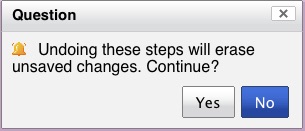![[voa2 zoned and toked]](../img/voa2_ha_zone_tok.jpg)
In Tutorial 2, you used a
command-line tool to build a model. In this step, we'll use the UI
to process documents using, among other things, the model you
built. We're going to use the same simple named entity task that
comes with MAT, and we're going to assume that your task is
installed. Like Tutorial 2, we're going to do this tutorial
in file mode.
In this tutorial, we're going to make use of the model we built
in Tutorial 2.
See the section on starting
the UI in Tutorial 1. If you
failed to shut down your Web server at the end of Tutorial 1, shut
it down and restart it now; any models you built in Tutorial 2
won't be visible to the server until you restart it.
Back in Tutorial 1, we used the UI
to prepare a document for hand tagging. Please repeat steps 3 and
4 from Tutorial 1. Once you complete those steps, your window
should look like it did at the end of step 4:
![[voa2 zoned and toked]](../img/voa2_ha_zone_tok.jpg)
Note that the zone and tokenize steps are grayed out, indicating
that they've been completed, and that the word units in the
document are delimited by gray boxes.
You may recall from Tutorial 2
that we built a default model
for the Named Entity task. The UI knows about this default model,
and we can use it now.
Press the gear button. The "tag" label in the Status line should
blink momentarily while the Web server loads the model, and then
you should see a window like this:
![[voa2 zoned, toked, tagged]](../img/voa2_zone_tok_tag.jpg)
The gear is now grayed out, and the "tag" step is partially
grayed out, indicating the step is partially done, and hand
annotation is available if you want to correct the output of the
automated tagger.
As we pointed out in Tutorial 1, this workflow permits you to
undo an operation. Let's say, for instance, you've applied the
model as in step 3, but you haven't done any hand correction, and
you've subsequently prepared a more accurate default model, and
you want to undo the automated tagging and apply the newer model.
Press the backward button. The UI will warn you that it's about
to undo unsaved changes:

Press "Yes", and the document will return to the state it was in
at the end of Step 2. Press the forward button again, and the
document will return to the state it was in at the end of Step 3.
At this point, you can hand-correct annotations in the same way
you added and edited annotations in Tutorial
1. You can also save the document, as you did there. Once
you've completed your hand correction, you can press the forward
button (the one with the drawing hand on it). The UI should look
something like this now:
![[zone, tok, tag, done]](../img/voa2_zone_tok_tag_done.jpg)
Hand annotation is no longer available, the "tag" step is now
completely grayed out, and the buttons have changed once again.
Now, we have two back buttons. The one on the left undoes the
"tag" step, which will remove all the annotations; the one on the
right will retreat back into the hand annotation phase of the
"tag" step. It will not undo any annotations; it will simply mark
the document as not yet complete, and give you the chance to do
additional hand annotation.
If you're not planning on doing any other tutorials, and you
don't want the "Named Entity" task hanging around, remove it as
shown in the final step of Tutorial 1.